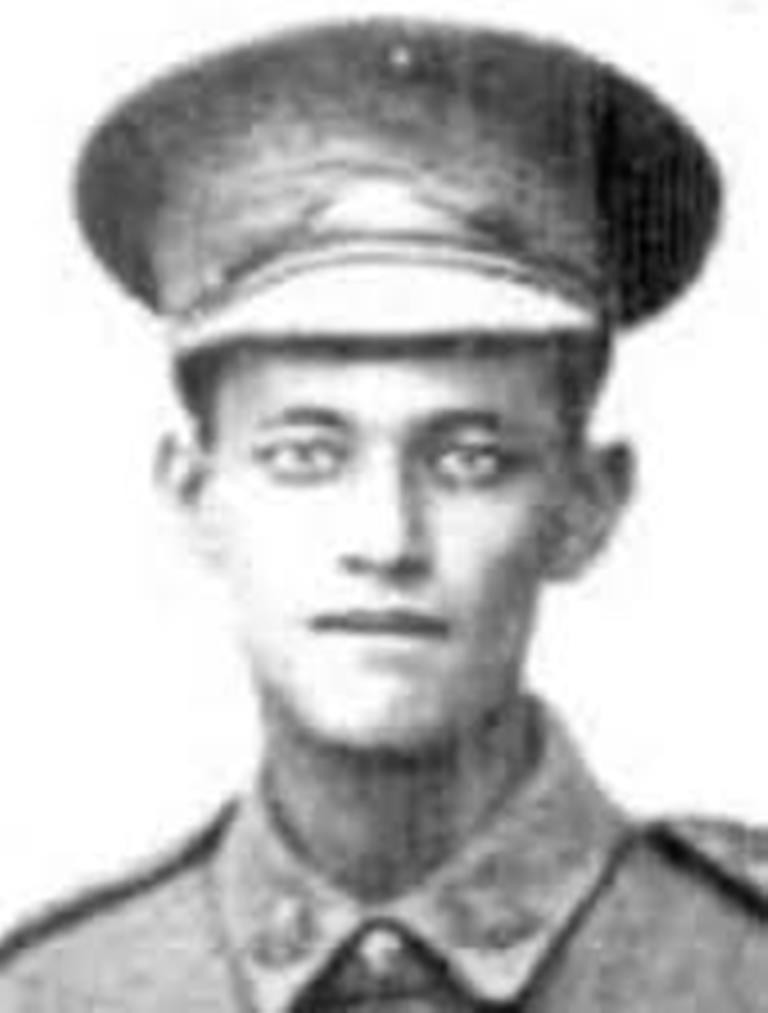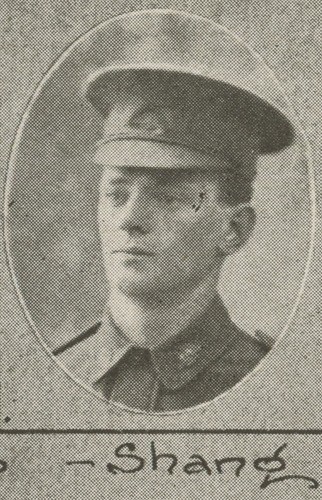
Private Sidney Wah Shang. Source: Honouring ANZACS
Guest Blogger: Joanna Olsen, Researcher of the 17th Reinforcements of the 12th Battalion
My Grandfather, Sidney Wah Shang, was born in Rockhampton, Queensland, in 1891. He was the fifth of thirteen children born to Jane Noon and her Cantonese-born husband, Lee Wah Shang.
The family eventually settled in Cairns and in January 1916, Sidney became the first Shang brother to successfully enlist in the Australian Imperial Force. Men with Chinese ancestry were initially not accepted, although as the war progressed and more troops were desperately needed, this restriction was relaxed. Interestingly on his enlistment papers Sidney provides an anglicised spelling of his middle name as "Waugh".
There were seven sons in the Shang family, and although others attempted to enlist after Sidney, the only one to succeed was the eldest son, Caleb James Shang, who went on to serve with the 47th Battalion and became known as the most decorated Chinese ANZAC of World War I. Caleb was awarded the Distinguished Conduct Medal and Bar, and the Military Medal while serving on the Western Front. For a full account of his life please see the detailed entry in the Australian Dictionary of Biography.

Private Caleb James Shang, 1918. Source: Cairns Historical Society.
Sid, as he was known, enlisted in Townsville on the 3rd January 1916, at the age of 24, and served in the 17th Reinforcements of the 12th Battalion. This Battalion was known as the "Tasmanian Battalion", however the 17th reinforcements were all from Queensland and Northern New South Wales.
He embarked for overseas service from Sydney on the 20th April 1916 on the troopship SS Hawkes Bay and joined the 12th Battalion in France in September 1916. The battalion was involved in bitter trench warfare from 1916 until 1918, fighting at Ypres in Flanders and on the Somme. In early 1918 the 12th Battalion helped to block the German spring offensive and later took part in the great allied push, fighting near Amiens on the 8th August. On this day the allied forces had the greatest success in a single day on the Western Front.

Sidney Wah Shang, ca. 1916. Source: family photograph
During his military career, Sid was hospitalised with various illnesses, including trench feet and cardiac palpitations. He had leave in Paris in December 1917 and had several weeks leave in England after the Armistice in 1918. On the 16th June 1919 Sid embarked on the ship, Ormonde, for the long voyage back to Australia.
He spent the rest of his life living in Innisfail, working as a butcher, a taxi driver, and then owned his own truck. He married Laura Que Fook, the sweetheart he wrote to throughout the war, in December 1920, and the couple had seven children. Although he was not physically injured, Sidney was gassed and this affected his health for most of his life. He was never eligible for a war pension as his illness was not deemed to be caused by his war service. Sidney died on the 16th November 1956, after suffering from tuberculosis.

One of the Shang brothers. Queenslander, 3 March 1917, P.26. John Oxley Library, Image No: 702692-19170303-s0026-0006
During the First World War, more than 200 Chinese Australians enlisted in the A.I.F. The obstacles hindering those keen to join up were the Defence Act of 1909 which blocked those "not substantially of European origin" and the attitude of the period which supported the "White Australia Policy". Despite these challenges some men of Chinese descent managed to enlist and a significant number received gallantry awards, some more than once, for their bravery in the field.
Guest Blogger: Joanna Olsen, Researcher of the 17th Reinforcements of the 12th Battalion
Comments
Your email address will not be published.
We welcome relevant, respectful comments.